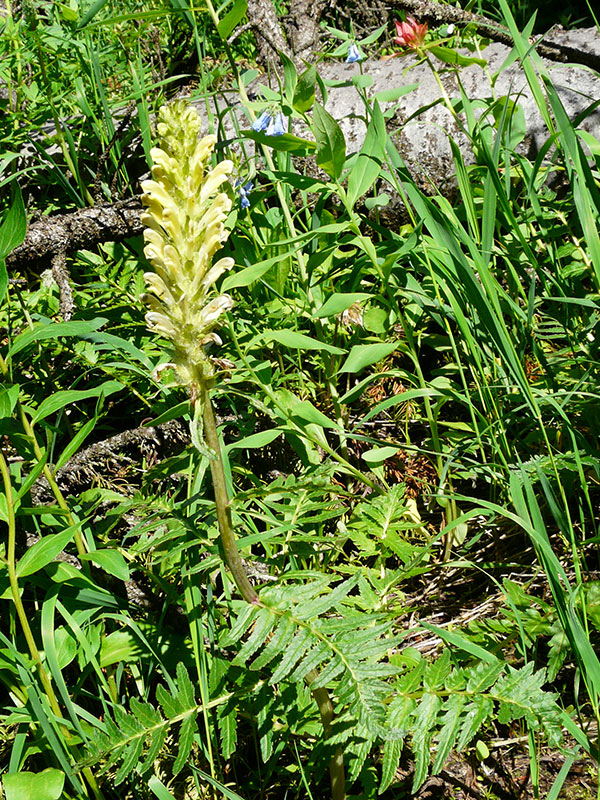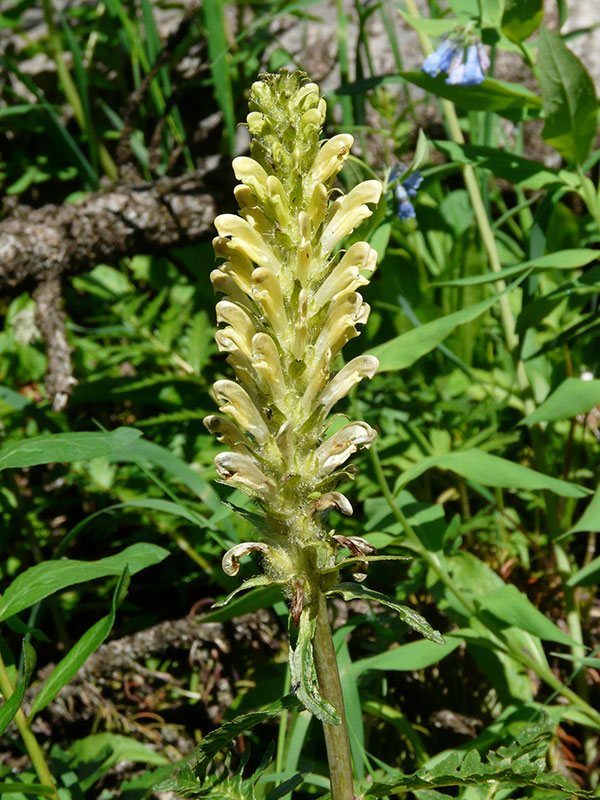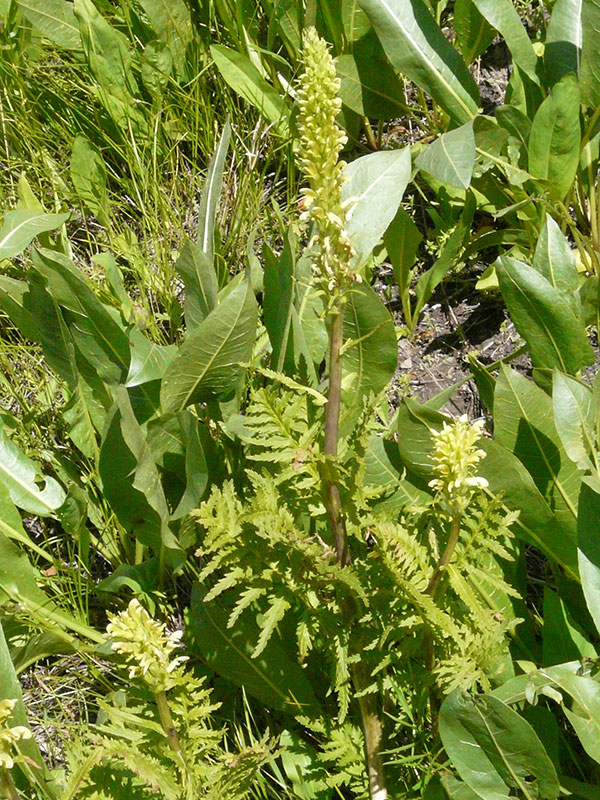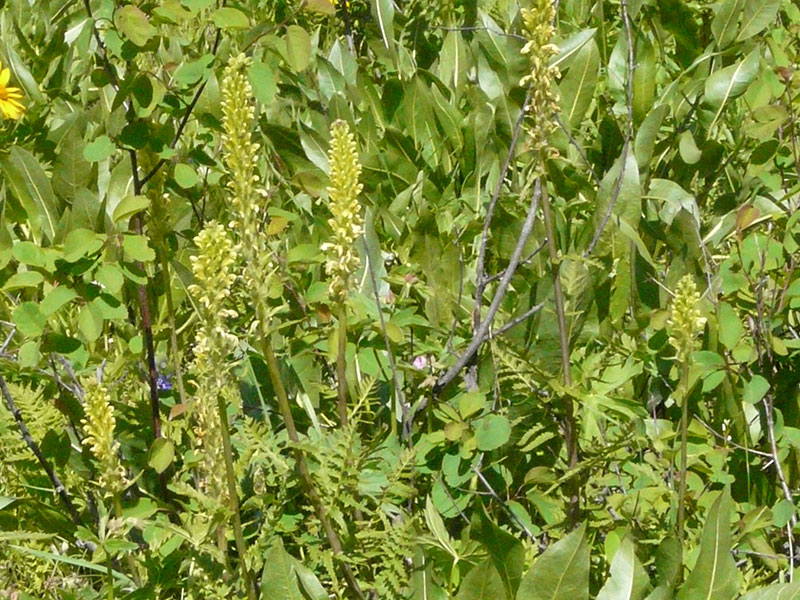Pedicularis bracteosa / towering lousewort
- dense, narrow inflorescence on upper half of stem
- yellow, beak-like flowers with upper and lower lips
- flowers from bottom to top
- conspicuous, fern-like leaves
- old flowers become light brown but remain on stalk
Also knows as: bracted lousewort, fernleaf, Canadian lousewort, yellow-flowered lousewort
Towering or bracted lousewort is a fairly common plant in the Valley, especially on moist hillsides and in open areas in woodlands… it is not drought tolerant. P. bracteosa is not a dominant species anywhere, but seems to do well in crowded communities even when surrounded by lots of other species. Although it is not specifically documented for this species, the louseworts in general are hemiparasites.
The two things that are really noticeable about this plant are its dense, narrow inflorescence (a raceme) of yellow flowers extending across the upper half of the stem and its highly divided, fern-like leaves. The flowers open from the base of the cluster upwards. The flowers have been described as “beak-like”. They open into two lips, the upper of which is hooded and arching downward; the lower is straight. As the flowers age and wither, they become light brown but hold on for a long time.
There is at least one other species in the west referred to as towering lousewort (P. procera). In the case of P. bracteosa, the plants may be up to 3 feet tall including the inflorescence, but usually not more than half that.
One last thing… the name, lousewort, derives from the [failed] hypothesis that, when ingested, the plant was responsible for lice infestations in livestock; the Latin for louse is pediculus. Clearly, this is pediculus. I mean ridiculous.
| Color | |
|---|---|
| Family | |
| Blossom size | |
| Inflorescence size | |
| Inflorescence type | |
| When? | |
| Where? |



